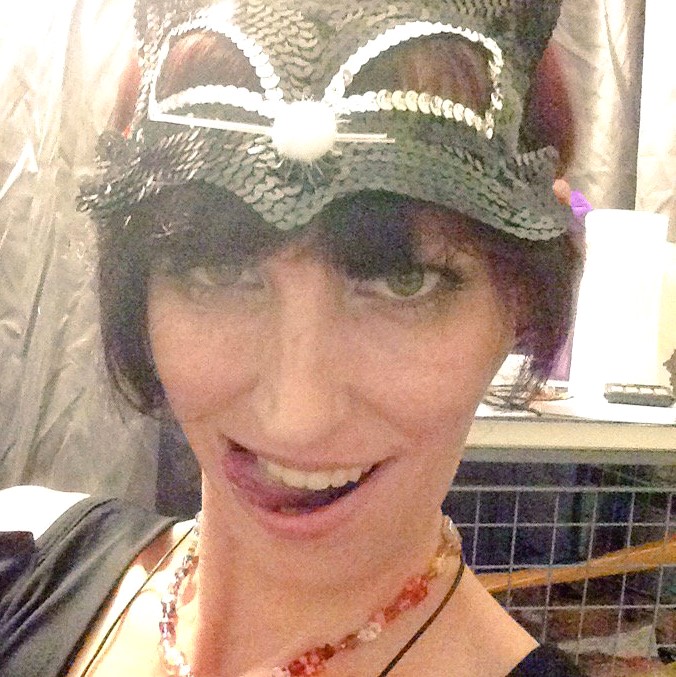Welcome to the World of the Cross Dresser

Pop culture has really left us at a bit of a loss when it comes to cross-dressing. At worst, our general point of reference is a super macho action hero squeezed into a wig and dress for some goofy American ‘comedy’, at best we’re looking at Dr Frank N. Furter. Either way, these representations are hardly true to the common experience of the cross-dresser.
Cross-dressing is a complex kink. Although evidence suggests the general cross-dresser is a heterosexual male, cross-dressers are assumed to lack clearly defined gender and/or sexual preferences. This lack of clarity is partially due to culturally perpetuated myths, and a society with a dependence on strict binaries, but it’s also due to the very complexity of the behaviour, and the varying ways it’s expression is perceived. So, let’s break it down and look at the realities of cross-dressing.
What is a cross-dresser?
There’s a lot of confusion and misunderstanding about what actually constitutes cross-dressing, or what it is to be a cross-dresser. This is not hugely surprising - not only do definitions change with context and cultural shifts, but the basic simplicity of the answer hides an incredibly complex world of both self-identity and sexuality. Essentially, to cross-dress is to wear clothes gendered opposite to the biological sex one is born with, be it for sexual gratification, or gender expression. This definition generally excludes those who cross-dress as part of their profession, eg. female impersonators, actors, Drag Queens/Kings. Although they may be cross-dressing for a particular role, if it’s for performance only, then it’s an ‘act’. Cross-dressing isn’t an act; it’s an outer expression of an inner feeling.
"When people see a me dressed as a woman, they often think two things: either,
I’m a trans woman, or I’m into some kind of kinky sex. They don’t get that I can be fine
in my male skin, but have a female side I also want to express." Tanya
For this article, the focus is more on the experience of male cross-dressers. The vast number of people who identify as cross-dressers are male, in fact female cross-dressers are uncommon these days. On one hand, this looks like a win for feminism - we get to wear pants and sensible shoes, hoorah! - it’s one less gendered taboo. But on the other hand if traditionally female clothes weren’t still looked upon as ‘weak’, or ‘submissive’, or ‘impractical’, then there would be no problem with your boyfriend rocking your nighty cos it’s close to hand… as you do with his t-shirt.
Why Cross Dress?
Cross-dressing is most often seen as part of gender expression. For some people, this means expressing a clear want to be the other gender for a period of time - and to take on the roles and responsibilities of that gender. For others, taking time to cross-dress provides an escape from their everyday lives - the emphasis is on the fun of dressing-up and the freedom in expressing another side of themselves. Whatever the ‘reason’, there is a need to express the gender opposite to which you were biologically assigned.
For the most part, cross-dressing is not engaged in for sexual gratification - it’s more of a look than a fetish. That said, most male cross-dressers do aim for a hyper-feminised version of Woman, and as such perpetuate a standard of female that includes curves, hair-dos, and make-up. No judgement on this - glam up’s are great! - but when you look so ‘hot’, there’s still an unfortunate assumption it’s cos you wanna be fucked. Just cos people wanna feel sexy, and show that via their look, doesn’t mean they wanna DO sexy. Most cross-dressers don’t see their desire as a way to get sex, and the male ones certainly aren’t out to ‘trick’ any straight dudes into sex - this is simply a form of self-expression, that many would appreciate having validated with nothing more than a friendly smile of acknowledgement that they exist in this world.
"For me there’s a lot of pressure to make (the cross-dressing) about sex,
especially online. It’s the way most people want to engage." Carlee
Fetish Cross-Dressers
In terms of kink and fetish, more people fetishise cross-dressers themselves, than people fetishise cross-dressing as an act. Considering that for so many cross-dressers, the act is primarily about expressing themselves, rather than getting laid it’s hardly surprising. The fetish cross-dressers, however, cross-dress with the focus on sexual gratification, be that via their own hand or with a partner. Masturbation is a very common form of sexual expression for many fetish cross-dressers - and although for many that need tends to drop off once they become more comfortable with themselves. For some the sexual link to cross-dressing never leaves. Those with supportive partners often find themselves involved in sexual role-play in which their cross-dressing is encouraged.
Validation that you are an attractive member of the opposite sex is highly arousing for fetish cross-dressers, but a lack of support can lead people to seek a need of approval from less safe options - without support, it’s much easier to be persuaded into doing something uncomfortable cos ‘acceptance’.
Common Myths About Cross-Dressing
Cross-dressers are uncomfortable with their gender:
Cross-dressing is not a signifier of gender issues. In fact, many people who identify as cross-dressers do so after learning they can be who they are and wear the clothes and signifiers of the opposing gender without losing a sense of themselves. That said, the act of cross-dressing is often something transgender people engage in while solidifying their final gender identity, so there is potential for discomfort if people are lacking support. In terms of fetish cross-dressers, the cross-dressing is associated with sex, not gender, so is irrelevant.
Cross-dressing is weird:
Nope. Giving clothes a gender in the first place was weird! Super weird! And historically speaking, not something humans have been doing for a great deal of time. Cross your fingers it’s just a cultural glitch.
Cross-dressers are transgender:
Uhmmm, no. Absolutely not. Transgender people are the gender they identify as (male, female, neither, or both) and as such wear the clothes gendered appropriate to the identification. Cross-dressers identify with their biological gender and dress opposite to that. The confusion possibly stems from the fact that the word ’transvestite’ was coined in 1910 to pathologise people with a proclivity for cross-dressing. (…and both words start with ’trans’ so let’s just chuck ‘em in the same basket, right? Wrong.)
As more cross-dressers found offence in their activities being a medical issue, a critical mass grew, and the 1970’s saw the term ‘cross-dressing’ promoted and encouraged. Cross-dressing, like many other fetishes, are now only considered psychiatric conditions when causing ongoing dysfunction in to day-to-day life. And just to be clear, unless you’re a cross-dresser reclaiming the word for yourself, it’s probably good to know the only time ‘transvestite’ should be used in when singing along to Rocky Horror.
Cross-dressers are gay guys trying to trick hetero dudes into bed:
Actually, the vast majority of male cross-dressers are straight; statistics stating anything from 85-95% identify as heterosexual. The majority of cross-dressers aren’t doing it for direct sexual gratification. And if you’re the type that believes this myth, I doubt anyone would bother sleeping with you.
Cross-dressers are obvious:
The reality is that there are times when cross-dressers don’t have the freedom/space/time to do a total gender transformation, but they still want to keep in touch with that opposite gender expression. In some cases, people cross dress undergarments, or wear stockings under their masculine attire, particularly in work scenarios. On the other hand are people who work so hard to refine their look, that you would walk straight past them and not even know they weren’t the gender their outward representation suggests.
Going forward, cross-dressing can potentially play a role in addressing the inequality inherent in our patriarchal society. Rather than the current idea of women masculinising, perhaps we should encourage the dudes to ‘get chicky with it’? There’s definitely empirical proof that female clothes don’t actually kill brain cells, or inhibit blood flow to the frontal lobe - ‘female’ clothes don’t make anyone ‘weak’ or ‘stupid’. There’s actually nothing to fear.
For most, cross-dressing is more than just some fun-time fetish - this is an expression of who they are. It gives people some contentment and happiness, and makes them feel ‘whole’. Cross-dressing is a harmless, personal preference, and as such, should be supported and accepted as just another different thing people do.



Likes & Comments
Comments (29)
Satinlover1978
Ifuwannadome
Satinlover1978
Ifuwannadome
love2dress
Sassysissy242
badthoughts63
Plumjoe
AMM.Events
A.KnightsTale
muscleguy443
Mindfood2
CarlaSanz
Alicewho
AMM.Editor
AJMelbts
Alicewho
333funcouple333
AMM.Editor
333funcouple333
CUTETGURL
AJMelbts
CUTETGURL
Bluey1968
333funcouple333
AJMelbts
KinkyGirl101
A.KnightsTale
ambers447